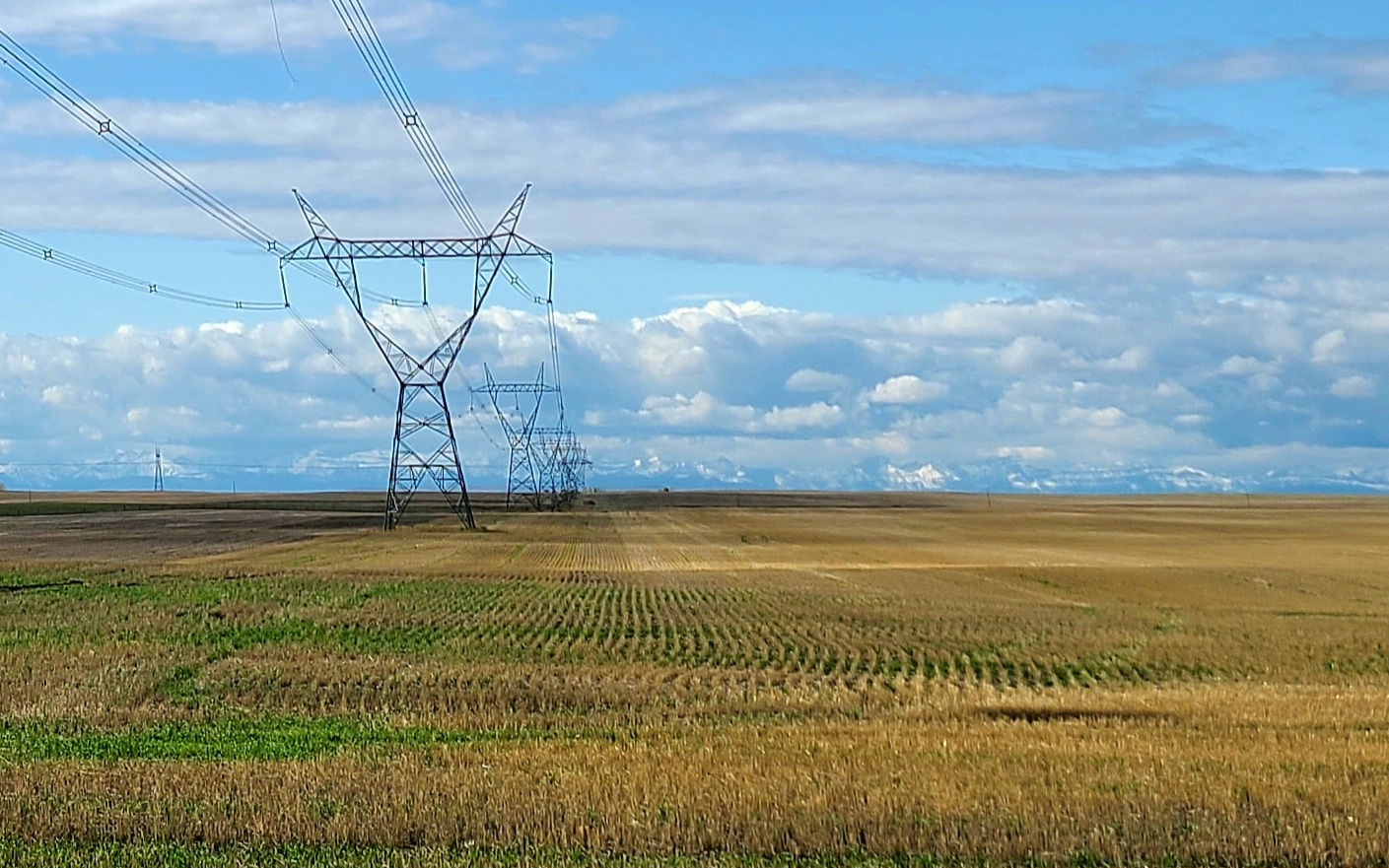Farming near power lines

- Never stack hay or pile grain near power lines. These can be inviting for kids who may climb too close to a power line. AltaLink invited 4-H Alberta members to enter a video contest sharing tips on how to stay safe on the farm. Check out the winning videos here!
- Use care when doing field work around power poles and guy wires. Watch for broken or dislodged guy wires. Report broken or damaged guy wires to your electrical service provider immediately.
- Always lower high equipment, such as augers and grain boxes, before moving them.
- Never place bulk fuel tanks or granaries near power lines.
- Know the height of any new equipment your purchase. Current regulations state that anything higher than 4.14 metres (13.6 feet) in height that will be travelling down a highway or public road required a permit from Alberta Transportation.
- Never spray water hoses or irrigation pivots at power lines.
- When using machinery to dig, a clearance distance of one metre (3.2 feet) has to be maintained from any underground electrical cable. If you must work closer, contact your electrical service provider.
- Be careful when pruning as a wire could be hidden in a tree or bush.
Operation of agricultural vehicles and machinery within the right-of-way
The agricultural community plays an important role in hosting the province’s transmission facilities. However, transmission lines are built to the code that is applicable the year that the line was built, which impacts the height of agricultural vehicles that can pass safely under the line.
- Vehicles and machinery do not approach within a minimum 1 metre (3 feet) horizontal distance of AltaLink’s facilities (towers, poles and anchor wires)
- Agricultural vehicle height (including antennas) does not exceed 4.3 metres (14 feet) to highest point (such as an antenna)
- Soil stability and drainage are maintained so as not to impact AltaLink’s facilities
- There is no storage of fuels, refuelling or maintenance of vehicles within the right-of-way
Note that many transmission facilities can safely accommodate agricultural vehicle heights greater than 4.3 metres (14 feet). If your vehicle exceeds 4.3 metres (14 feet), please contact AltaLink at: 3rdpartyrequests@altalink.ca
Irrigated lands
There are three main factors to consider when working around transmission facilities on irrigated lands: direct contact, spraying and induction.
Direct contact
If you must handle irrigation equipment close to a transmission tower or line, take caution to never come near or touch the transmission facilities. In many irrigation systems, especially older ones, aluminum pipes are used and they are particularly conductive. If any kind of pipe or hose contacts a tower or line, it will create a path to the ground and you could be seriously injured.
Spraying
Electricity will flow through many materials to make a path to the ground, including water. If you enter this path to the ground you could seriously harm yourself and any equipment you’re using.
When using an irrigation system on your land, make sure to never get too close or make direct contact to the power line with the water stream under any circumstance. Using a flapper to break up the spray helps to not create a current.
Induction
In rare circumstances, induction can occur where a piece of irrigation equipment you’re using can be electrically charged by a tower or line next to it. Ensuring your irrigation system does not run parallel to the transmission line will help to reduce the potential for induction. Please exercise caution when using any kind of equipment near transmission facilities.